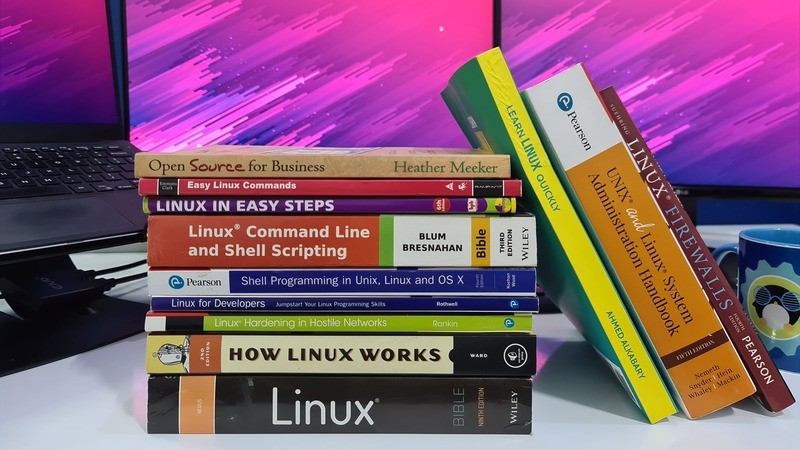So you’ve decided to try out Linux but you don’t know where to begin. Well, the confusion doesn’t have to be overwhelming, since we’re here to give our readers the basics of what to expect, and what it is in the first place.
We’ll be going through the origins of the OS, the fundamentals of how to boot the system, and we’ll dive into more details about what a user can expect when entering into this specific computer environment.
On that note, for those who need an expert writer’s assistance in compiling great ideas for an article, here’s an example article from one of the best writing essay service platforms online, and it’s just one of the many topics that can be covered without difficulty.
Moving on, here’s the guide:
Overview: On Linux
First off, let’s get to know some basics about this operating system (OS). Linux is a free and open-source operating system. It was released to the public by Linus Torvalds on September 17, 1991, coded in C language. It’s the leading OS in servers and mainframe systems. It’s made of firmware, and while it’s not as popular as other OS, it has its perks.
It delivers great performance. For example, to draw comparisons, it’s much smoother and much faster than Windows 10 or 11. It’s a multilingual OS and it supports platforms such as Unicore32, Alpha, NDS32, Hexagon, ARC, and ARM. This OS is sold in distributions, some popular ones being Red Hat Enterprise Linux and Suse Linux, but there are more.
While it has a lot of distribution choices, this has been critiqued as confusing. It’s also been bashed for confusing complex environments and poor customer support from hardware manufacturers.
Most computers sold in tech retail shops or online come pre-installed with Windows OS, which might be one of the major reasons why Linux isn’t as widely used. However, tech-savvy people will usually own a Windows OS-driven computer, as well as a Linux OS since both OS have their perks
1. Picking A User-Friendly Distribution
Before testing it out, research and find a Linux distribution that is user-friendly. As we’ve stated Linux has many distributions and it can be confusing, please find one that isn’t difficult to run. There are several distributions that were created to ease the transition between operating systems. You can easily find the list online.
2. Testing It Out
Using Linux used to be much more confusing but it’s been made to be navigated with more ease nowadays. The best way to become familiar with it is to start using it. It’s possible to run Linux on a Windows or Apple computer, just search up the details online.
3. Live CD Testing
Many distribution packages come with a LIVE CD tool that can help your computer boot into a Linux environment. This enables the user to run the OS without installing anything. Ubuntu, for example, offers CDs.
4. Familiarize With OS Parts
Here’s a rundown on what to expect when the OS is running
- Bootloader: software that manages the booting process.
- Kernel: this is the core of the system and it manages the CPU, peripheral devices, and the memory.
- Shell: the Linux command line is the shell. It’s a command process that enables users to control the computer via commands done by text. Modern Linux doesn’t require users to type in commands through the command line anymore.
- Daemons: background services including sound, printing, etc.
- Desktop Environment: Linux has many desktop environment options. Some include Unity, GNOME, Enlightenment, Cinnamon, KDE, and XFCE.
- Graphical Server: This is what displays the graphics on the monitor, and is commonly referred to as the X server.
- Applications: Similar to Mac And Windows, Linux has many high-quality applications that can be installed, and Linux has its own ‘app store’ where you can find apps and install them easily.
5. Getting Used To The File System
Files start with “/” and the different hard drives are found and accessed through the “/dev directory” and the home directory should typically be found in “/home/(username)/”.
6. Skip Using The Shell
Firstly, let’s familiarize ourselves with the terms we’ll need while processing all this information. A Graphical User Interface or a GUI is a tool/feature which supports an interface. It enables users to interact easily with the system through the clicking of icons, and the movement of the keyboard and mouse.
The GUI can help new users handle everything, so you won’t need to use the shell to type in commands. GUI will be able to handle everything, from configuring network connections to updating and installing apps.
However, please be aware that this will only typically apply to the desktop. If you work with it on a server, you will still need to use the shell and type in commands.
7. Basic Linux Commands
For those who are working through a server, using the shell might be inevitable, so here are some of the most important commands. Keep them in mind.
- rm: is used for removing files from your Linux OS.
- touch: allows users to make files using the Linux CLI.
- rmdir: used to remove existing commands using the Linux CLI.
- mkdir: used to make a new directory.
- man: used to display the manual of inputted commands.
- locate: use to locate a file.
- mv: used to move a file to another folder or directory.
- cd: lets users change between file directories.
- Is: lists all the important directories filed under a given file system.
Final Thoughts
Linux is different from Windows or Mac OS. It has a more grassroots manner to it and can be daunting for those who aren’t tech-savvy or have been too familiarized with one OS for too long.
However, it does have certain perks that make it worth using or even just having at your disposal.
It’s not needed for daily use but there are times when it will be more advantageous. Linux does not track its users. It offers privacy like no other. And as we’ve said, if you’ve got decent hardware, Linux can be extremely fast and efficient.
How to Get Used to Linux Quickly?





